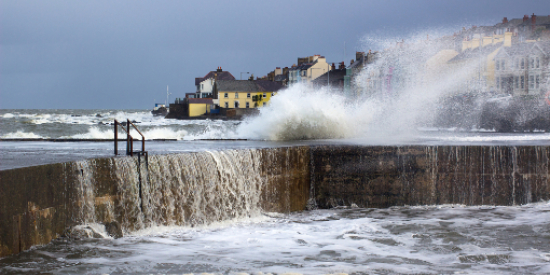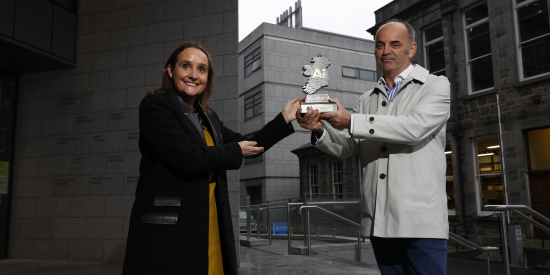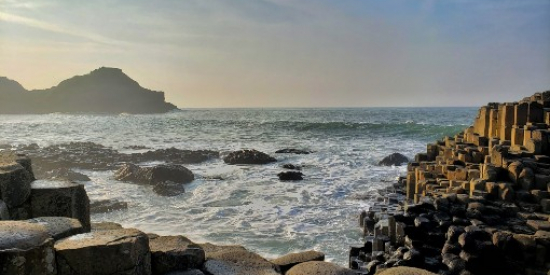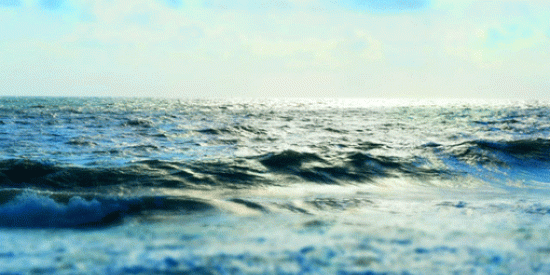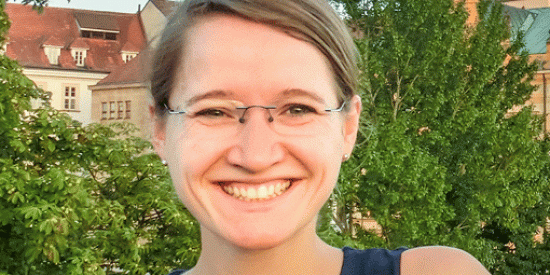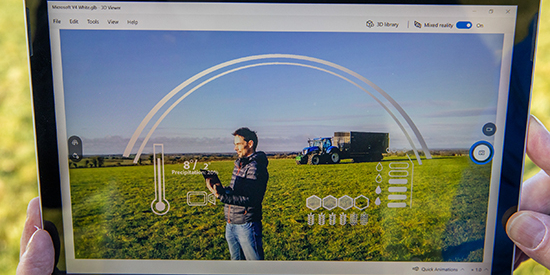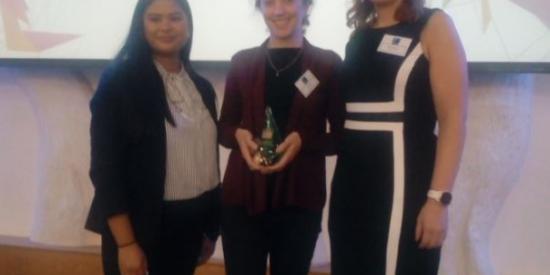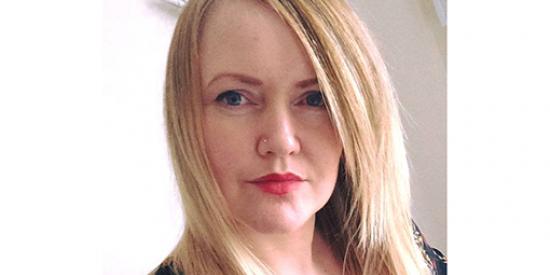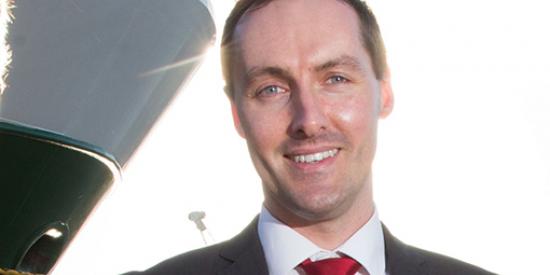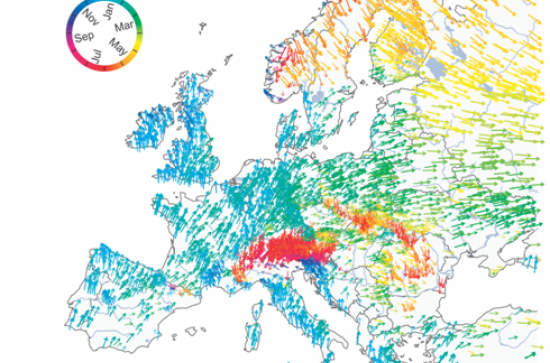
Climate change link to the timing of European floods
A linkage between climate change and floods has been identified using a river flow dataset of unparalleled scale and diversity. This is the first time this link has been demonstrated at a continental scale using observational data. A new study published in the prestigious journal Science shows that the timing of the floods has shifted across much of Europe, dramatically in some areas.
Dr. Conor Murphy, senior lecturer in Geography and researcher with the Irish Climate Analysis and Research UnitS (ICARUS) joined a team of 30 European researchers, led by Prof. Günter Blöschl from the Vienna University of Technology. Together the team assembled and analysed quality assured data from over 4000 river flow gauges across 38 European countries. The result: Climate change has a real impact on flood events in some regions. This has been seen by a shift in the timing of floods over the years. Depending on the cause of the flood events, they occur earlier in some regions, in others they occur later. Dr. Murphy commented that "The timing of floods throughout Europe over many years gives us a very sensitive tool for deciphering their causes.
This newly created dataset means that we are now able to identify connections that previously were purely speculative." The research suggests that floods in north-east Europe, Sweden, Finland and the Baltic states occur a month earlier than in the 1960s and 1970s, due to earlier snow melting associated with human-induced climate warming over this time period. In parts of the Mediterranean coast, flood events take place later in the season and this aligns with observed warming of the Mediterranean. In Ireland and neighbouring parts of north-west Europe, a more complex picture emerged. Floods occur up to two weeks later in western Ireland, northern Britain, coastal Scandinavia and northern Germany than they did 20 years ago. Researchers believe later winter storms may be linked to a modified air pressure gradient between the equator and the pole, which may also reflect climate warming, although natural variability in this pattern is also an important factor over this time period. Emphasising the complexity of flooding here, the east of Ireland and southern Britain see ‘winter’ floods now typically occurring earlier towards the autumn, which may reflect the role of soil moisture, as maximum soil moisture levels are reached earlier in the year in more recent periods. Co-author Dr Shaun Harrigan, a PhD graduate of Maynooth and now at the Centre for Ecology and Hydrology (CEH) in the UK said “This research highlights the need to consider the role of changing soil moisture dynamics, as well as extreme precipitation, in understanding how floods might change in future”. Dr. Julia Hall, also a co-author and Maynooth PhD graduate, now working at the Vienna University of Technology played a central role in collating the dataset. Dr. Hall said that “This international collaboration has gathered together an unparalleled dataset, in terms of geographical scale and the sheer diversity of the rivers involved. It really underscores the value of the long-term, quality assured river flow datasets that have been gathered for Ireland in previous work at ICARUS. Flood timing is more sensitive to climate driven changes than other aspects of flooding, such as the magnitude of peak flows. Generally, trends in peak flows associated with warming have remained elusive. For example, another recent international collaboration, that Dr. Murphy has participated in found little evidence for increases in flood magnitude across Europe and North America. The new study in the journal Science, which was funded by a European Research Council Advanced Grant award to Prof. Bloschl, highlights that if current trends in the timing of floods continue ‘considerable economic and environmental consequences may arise.’ It states that catchments around the North Sea, for example, may see reduced agricultural productivity due to softer ground, higher soil compaction, enhanced erosion and direct crop damage.
Full paper reference Günter Blöschl, Julia Hall, Juraj Parajka, Rui A. P. Perdigão, Bruno Merz, Berit Arheimer, Giuseppe T. Aronica, Ardian Bilibashi, Ognjen Bonacci, Marco Borga, Ivan Čanjevac, Attilio Castellarin, Giovanni B. Chirico, Pierluigi Claps, Károly Fiala, Natalia Frolova, Liudmyla Gorbachova, Ali Gül, Jamie Hannaford, Shaun Harrigan, Maria Kireeva, Andrea Kiss, Thomas R. Kjeldsen, Silvia Kohnová, Jarkko J. Koskela, Ondrej Ledvinka, Neil Macdonald, Maria Mavrova-Guirguinova, Luis Mediero, Ralf Merz, Peter Molnar, Alberto Montanari, Conor Murphy, Marzena Osuch, Valeryia Ovcharuk, Ivan Radevski, Magdalena Rogger, José L. Salinas, Eric Sauquet, Mojca Šraj, Jan Szolgay, Alberto Viglione, Elena Volpi, Donna Wilson, Klodian Zaimi, and Nenad Živković, ‘Changing climate shifts timing of European floods, Science, VOL 357, ISSUE 6351, DOI: 10.1126/science.aan2506, published online 11 August 2017.

